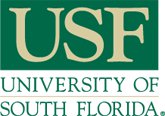Below is a summary of the abstract you submitted. Presenting author(s) is shown in bold.
If any changes need to be made, you can modify the abstract or change the authors.
You can also download a .docx version of this abstract.
If there are any problems, please email Dan at dar78@pitt.edu and he'll take care of them!
This abstract was last modified on May 19, 2021 at 3:33 p.m..

The PHAGES bioinformatics portion of the program provides students an opportunity to work independently and collaboratively on the annotation of phage genome/s. The completed genome annotation is then assigned a unique accession number and “published” in the NCBI database GenBank with all student collaborators listed as authors. The ability to show the student’s previous entries at the start of the semester and how their names are associated with the outcomes serves as a powerful incentive to the work. However, as powerful as the GenBank submission is to the development of the student, one of the most important aspects of being a scientist is becoming a good writer to communicate the results of projects. Quality writing exemplifies the basic skills expected of a trained scientist: organization, attention to detail, and critical analysis. Thus, to build upon the excitement and ownership of the completed GenBank annotation and help students understand the importance of analysis and formal publication, they can be empowered to write a Microbiology Resource Announcement (MRA). While this may sound like a daunting task for novice scientists, the MRA is a short 500-word article and we have developed a structure and resources to assist any faculty member in integrating the MRA into their course. In our model, all students create a draft MRA once the annotations are completed and independently determine the area they will focus on. Students are then assigned peer review of the MRAs using a rubric for analysis of the various sections and identification of the most interesting findings. A single document is then created and the class works collaboratively to write the final draft. This exercise ultimately promotes peer collaboration, encourages engagement and independence, models scientific thinking, and results in a formal scientific output. The QUBES resource we have developed provides 1) A guide that explains the purpose and sections of the MRA, 2) an MRA template, 3) a peer review rubric for analysis of the different sections of the MRA and 4) a process document to assist faculty with how to build the MRA into the course.


